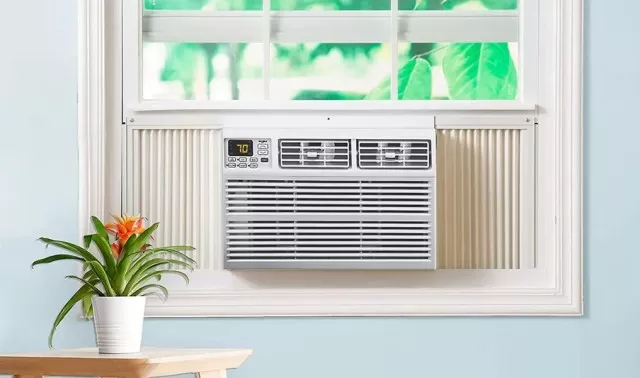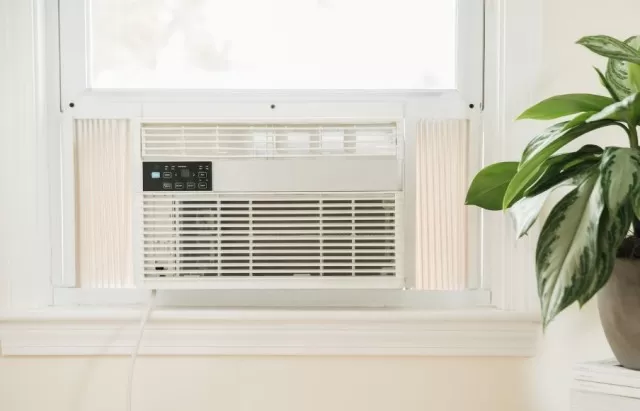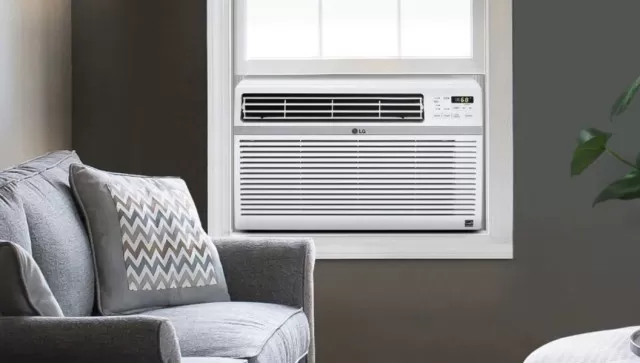Follow our detailed instructions for effectively cleaning your AC unit to ensure it operates at its peak performance.
Properly Clean a window AC unit

Step 1: Clean the Air Filter
Before initiating the cleaning process for your window AC unit, it is imperative to disconnect it from the power source.
Then, identify and remove the air filter. While some window units feature filters that can be effortlessly pulled out, others may necessitate the initial removal of the front cover, which might require the use of a screwdriver.
To determine the optimal method for your specific AC unit model, consult the manufacturer’s manual.
Once the filter is removed, utilize a handheld vacuum to extract as much dust and debris as possible.
Subsequently, prepare a bucket filled with Soapy Water and procure a bristle brush. Immerse the filter in the soapy water and gently brush it as needed until it is thoroughly clean.
Ensure the filter is completely air-dried before reinstalling it.
Step 2: Clean Air-Conditioner Coils and Fins
Identify the evaporator coils and fins within your unit, responsible for transforming hot air into refreshing cool air.
Carefully clean these components using a toothbrush or a soft-bristle brush. Exercise caution and handle the coils and fins delicately to prevent any bending or damage.
To remove any lingering dirt and dust, employ compressed air to thoroughly spray the coils and fins.

Step 3: Clean the Exterior and Grill
Clean the exterior of your window AC unit’s grill using a damp cloth or rag.
In the event of substantial grime buildup, follow the manufacturer’s instructions to detach the grill and immerse it in warm soapy water. Use a brush or cloth to effectively clean between the grill’s gaps.
Ensure the grill is completely dry before reinstalling it.
Subsequently, wipe down the top and sides of the window AC unit using a damp cloth.
If your AC unit includes a drain or drip tray, ensure these components are cleaned by emptying them and wiping them down thoroughly. Allow all parts to air-dry completely before reassembling the AC unit.
Step 4: Prevent Mildew and Reassemble
To safeguard against the development of mold and mildew, use a spray bottle filled with hydrogen peroxide to treat the external areas of the air conditioner through which air flows.
Allow ample time for all components to dry thoroughly before reassembling them.
With the cleaning process complete, you can now relax and enjoy the benefits of your freshly cleaned AC unit as it efficiently delivers cool, fresh air into your home.
Regular maintenance like this will not only ensure your AC unit’s optimal performance but also extend its lifespan.
How Frequently Should I Perform Maintenance on My Window AC Unit?

When it comes to the upkeep of your window AC unit, different components require varying levels of attention.
However, among them, the filter stands out as the most crucial element that necessitates regular cleaning. It is strongly recommended that you clean the removable filter on a monthly basis.
Depending on how frequently you use your air conditioner, there may come a point when simply cleaning the filter won’t suffice, and it will need to be replaced. Many AC units come equipped with an indicator light that signals when it’s time to swap out the filter, ensuring you are promptly aware of when a replacement is necessary.
During periods when your window AC unit is not actively in operation, you have a couple of options to consider.
You can choose to remove and store the unit in a safe place, or you may opt to invest in a window cover designed for off-season protection. Both of these alternatives effectively minimize the accumulation of dirt and debris on and within the unit, ultimately reducing the maintenance required.
By following these recommended practices for your window AC unit, you not only ensure its efficient operation but also extend its overall lifespan, providing you with continued comfort and reliability throughout the seasons.
Consistent care and attention to the filter and seasonal storage or coverage will contribute to the longevity and performance of your window air conditioner.
*The information is for reference only.